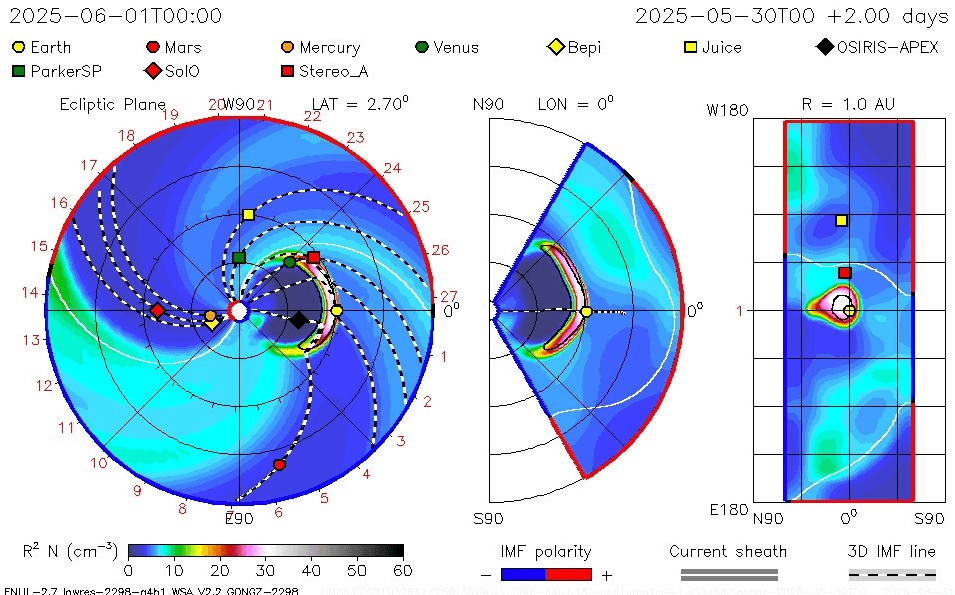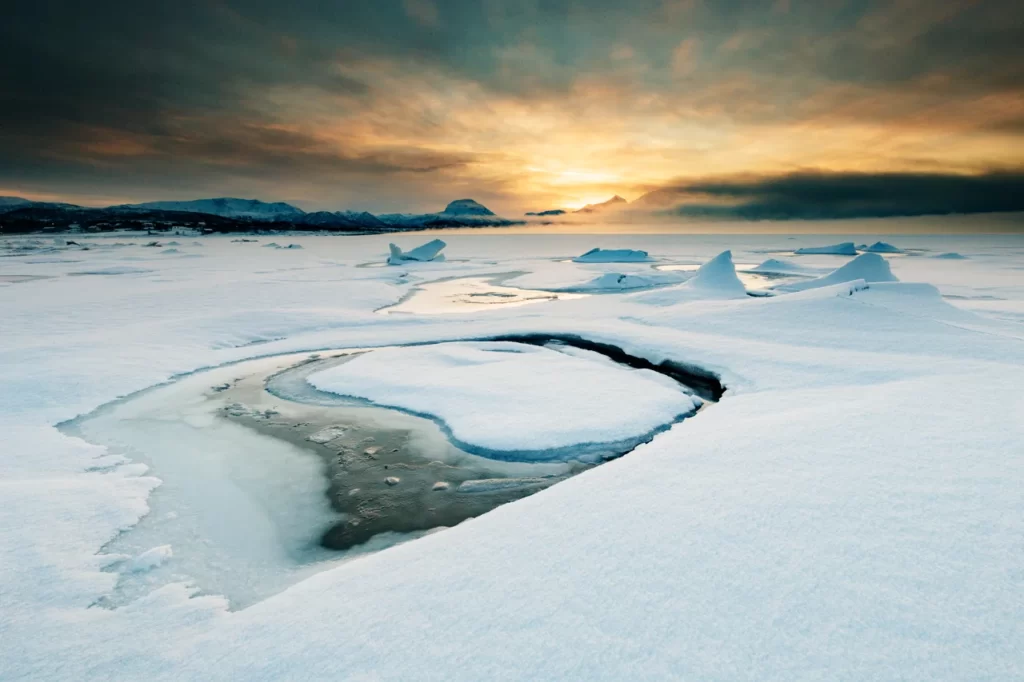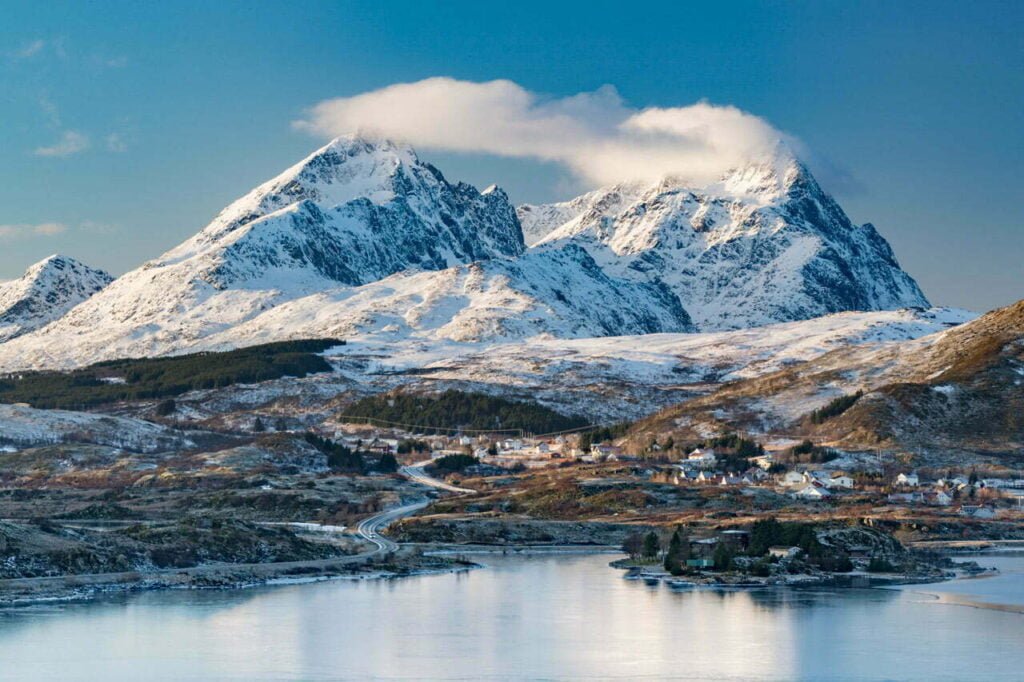Could this be another May 10th or Oct 10th 2024?
The incoming solar storms launched from the Sun in the past few days, especially last night’s fully Earth-directed CME could mean we have a similar opportunity to the amazing displays seen on May 10th 2024!
Given the time of year, most locations in the Northern hemisphere that are inside the Aurora Zone have far too much light during the night right now. If this is a strong storm when it reaches the Earth it means that those living further south of the aurora zone will have a very good chance of seeing something! Those in the Southern Hemisphere, particularly Australia and New Zealand could be in for a great display too.
What just happened?
Late on 31 May (00:05 UTC, 01 June), sunspot AR 4100 finally snapped.
Spaceborne sensors logged an M8.2 long-duration flare that ran for more than three hours – an energy curve usually reserved for X-class events.
SOHO coronagraphs immediately caught a full-halo coronal-mass ejection (CME) expanding straight toward Earth.
Preliminary shock-speed estimates hover near 1 900 km s-¹, putting the ejecta among the fastest of Solar Cycle 25.
Spaceweather.com calls the blast “a doozy”; Dr Tamitha Skov likens the filament eruption to “a dark snake that opened the Sun like a zip.” Multiple component clouds may now be chasing one another through interplanetary space – a classic set-up for a compressive “cannibal” CME.
When will it arrive – and how strong will it be?
NASA ENLIL modelling projects first impact during the early hours of Saturday, 1 June (give or take ±8 h).
- Most likely the strongest part of the storm will occur from Sunday 1st June 15:00 UTC until Monday 2nd June 15:00 UTC
Because at least two CME shells are stacked, forecasters at SWPC and SpaceWeatherWoman expect an extended disturbance that could peak on 2 June.
Current watches sit at G3 (strong), but compression effects could push brief periods of G4 (severe) storming.

In the predicted solar storm animation above, the Sun is represented as a yellow dot and the Earth by a green dot. The top animation is looking down on the poles of the Sun and Earth, the bottom animation is looking side on.
What does a G3-G4 storm mean for aurora chasers?
Storm Level | Typical Auroral Footprint | Likely Visibility This Event* |
|---|---|---|
G3 (Kp≈7) | 50–55° geomag. lat. | Scotland, Northern England, Denmark, Germany, US-Canada border |
G4 (Kp≈8) | 45–50° geomag. lat. | Midlands, Netherlands, Northern France, Wisconsin, New York |
*Assuming clear skies and a dark Moon phase (Last Quarter occurs 30 May, so lunar glare is minimal).
Possible side-effects of a solar storm
Sector | What can happen? | Mitigation |
|---|---|---|
Radio / GPS | R2–R3 blackouts on the dayside; navigation jitter | Re-acquire fixes; schedule HF comms for post-storm windows |
Power grids | Extra transformer load at high latitudes | Operators already on storm watch |
Aviation & UAV | HF comms dropout; polar-route re-plots | Use satellite or land-line relays |
How to watch it
Keep the nights of 1 & 2 June clear. Twilight never gets fully dark in the Arctic now, but stronger storms often cause Aurora further from the poles where it still gets dark enough at night.
Face north; use a wide lens. The halo CME’s magnetic field is still unknown: if it turns south (negative Bz) expect sub-storm pulses every 30–90 min.
Follow live indices: negative Bz, solar-wind speed > 600 km s-¹ and Bt > 15 nT usually herald explosive arcs 20–30 min later.
We recommend using the My Aurora Forecast Pro app. Available on iOS and Android devices.
Why Solar Cycle 25 keeps delivering
Cycle 25’s sunspot numbers are already tracking 20 % above NOAA’s “high” scenario, and we haven’t even hit solar maximum (projected late 2025). Bigger, longer-lived regions such as AR 3664 in May 2024 and now AR 4100 raise the odds of clustered flares and cannibal CMEs. The result of this is more frequent, farther-south Northern Lights displays for at least the next 18 months.
Planning your own Northern Lights chase?
Our 2025/26 Northern Lights Tours and Photography Expeditions are now live. Every itinerary includes nightly Aurora Chasing, daytime wildlife and scenic photography excursions, and pro-level photo tuition. View all of our trips here.




